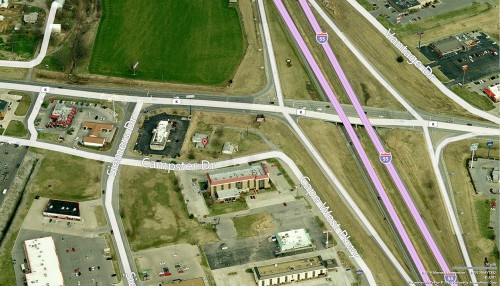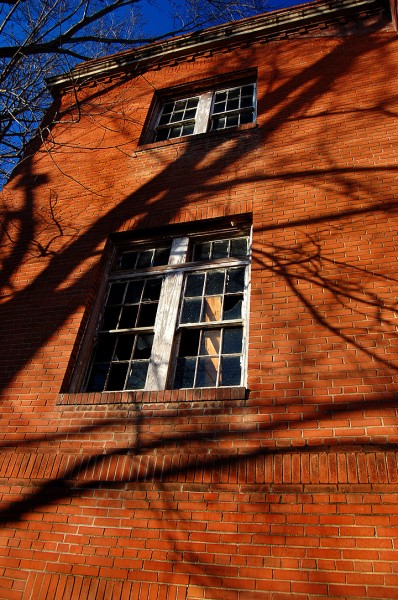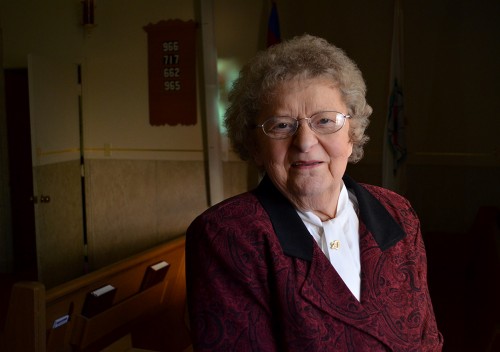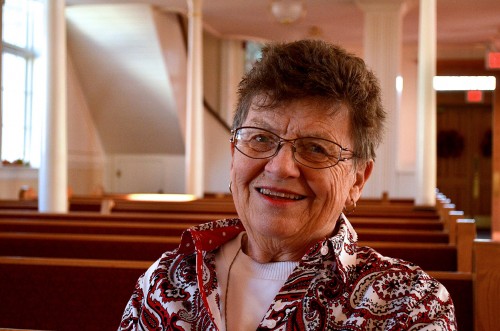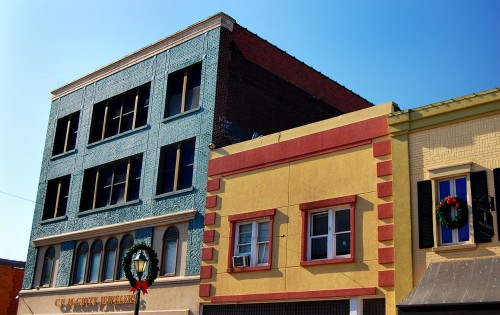 One of the bright spots – literally – on Main Street is McGinty’s Jewelers at 117 North Main Street. It’s refreshing to see how much that block has spiffed up in the last few years. (Click on the photos to make them larger.)
One of the bright spots – literally – on Main Street is McGinty’s Jewelers at 117 North Main Street. It’s refreshing to see how much that block has spiffed up in the last few years. (Click on the photos to make them larger.)
The McGinty building is one of the more impressive ones in the downtown area, but the First National Bank that occupied 115-117 North Main from 1905 to 1959 may have been even more impressive, based on the description in Fred Lynch’s October 11, 2013, blog.
First National Bank
 From the blog: The bank was constructed of brick with a facade done in Bedford limestone trimmed in bushhammered rock, the building featured a massive arched entrance that was 28 feet tall, 26 feet deep and 24 feet wide, with marble steps that led to the entrance doors. The building featured elaborate detailing around the windows, with an enriched and projecting cornice, brackets and dentils. The roof was highlighted with a balustrade. The interior of the bank was designed elaborately, with a 16-by-30-foot prism skylight supported by six carved Iconic columns. Italian marble wainscoting, mahogany wood trim and a mosaic-type floor were some of the many details found inside.
From the blog: The bank was constructed of brick with a facade done in Bedford limestone trimmed in bushhammered rock, the building featured a massive arched entrance that was 28 feet tall, 26 feet deep and 24 feet wide, with marble steps that led to the entrance doors. The building featured elaborate detailing around the windows, with an enriched and projecting cornice, brackets and dentils. The roof was highlighted with a balustrade. The interior of the bank was designed elaborately, with a 16-by-30-foot prism skylight supported by six carved Iconic columns. Italian marble wainscoting, mahogany wood trim and a mosaic-type floor were some of the many details found inside.
First National Bank was established in August 1891 and was first at 118 N. Main St. In 1956, the bank relocated to the northwest corner of Broadway and Main Street. Charles Hood, who became the owner of the stone-faced building in 1959, decided to renovate the structure by tearing out the interior, filling in the basement, and removing the stone arch. However, two months into the project, Hood made a change in plans and had the building razed in November 1959.
Downtown jewelers offered personal touch
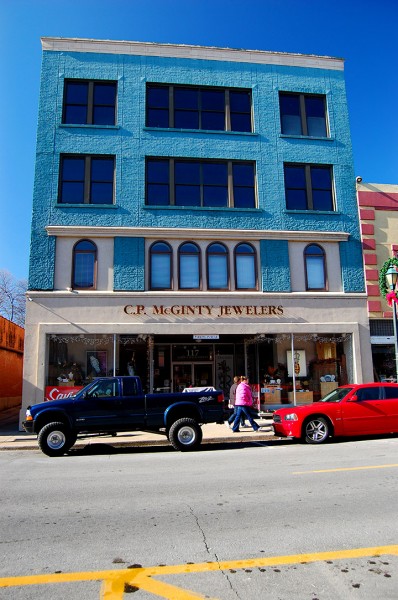 A February 27, 2005, Missourian story talked about how four long-time jewelers had found that downtown is where they wanted to be. It’s worth a read. The point was made that “Other stores in other parts of town may get more walk-in customers who may be just looking, but when someone comes to Lang Jewelers or McGinty’s or Zickfield or Jayson, it’s a special occasion for them. Their customers come, all the jewelers say, because their parents bought diamonds or watches there, and service and tradition mean something to those families.”
A February 27, 2005, Missourian story talked about how four long-time jewelers had found that downtown is where they wanted to be. It’s worth a read. The point was made that “Other stores in other parts of town may get more walk-in customers who may be just looking, but when someone comes to Lang Jewelers or McGinty’s or Zickfield or Jayson, it’s a special occasion for them. Their customers come, all the jewelers say, because their parents bought diamonds or watches there, and service and tradition mean something to those families.”
The four businesses mentioned in the story:
- Zickfield Jewelers and Gemologists – 29 North Main Street – in business since 1939
- McGinty Jewelers – 117 North Main Street – about 25 years in the downtown
- Jayson Jewelers – 115 Themis Street – “two generations” according to their website
- Lang Jewelers – 126 North Main Street – started as N.S. Weiler Jewelers in 1905 and became Lang in 1916. It closed in the fall of 2012.


